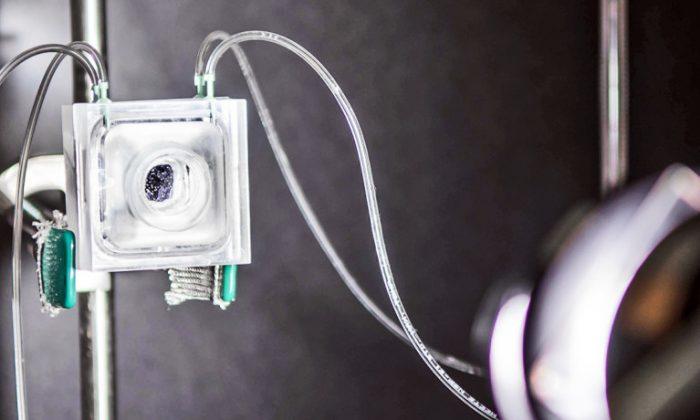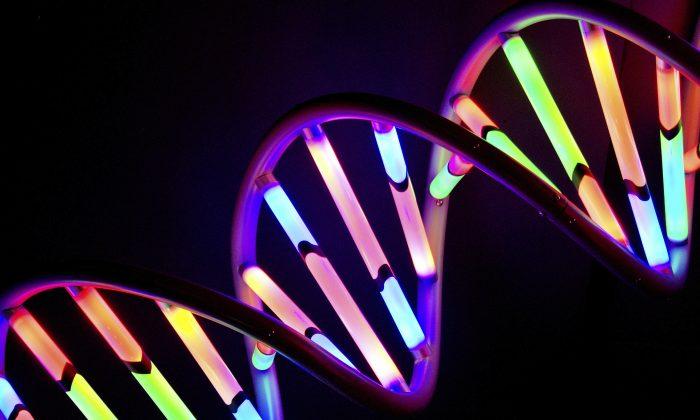A new “artificial leaf” system that uses solar energy to split water can safely and efficiently create hydrogen fuel.
“This new system shatters all of the combined safety, performance, and stability records for artificial leaf technology by factors of 5 to 10 or more,” says Nate Lewis, a chemistry professor at Caltech and scientific director of the Joint Center for Artificial Photosynthesis (JCAP).
The design, described in the journal Energy and Environmental Science, consists of three main components: two electrodes—one photoanode and one photocathode—and a membrane.
The photoanode uses sunlight to oxidize water molecules, generating protons and electrons as well as oxygen gas. The photocathode recombines the protons and electrons to form hydrogen gas.

No Explosions
A key part of the design is the plastic membrane, which keeps the oxygen and hydrogen gases separate. If the two gases are allowed to mix and are accidentally ignited, an explosion can occur; the membrane lets the hydrogen fuel be separately collected under pressure and safely pushed into a pipeline.

Semiconductors such as silicon or gallium arsenide absorb light efficiently and are therefore used in solar panels. However, these materials also oxidize (or rust) on the surface when exposed to water, so cannot be used to directly generate fuel.
Previous work in Lewis’s laboratory led to a major advance in the design. The work showed that adding a nanometers-thick layer of titanium dioxide (TiO2)—a material found in white paint and many toothpastes and sunscreens—onto the electrodes could prevent them from corroding while still allowing light and electrons to pass through.
The new system uses such a 62.5-nanometer-thick TiO2 layer to effectively prevent corrosion and improve the stability of a gallium arsenide–based photoelectrode.
Cheap Catalyst
Another key advance is the use of active, inexpensive catalysts for fuel production. The photoanode requires a catalyst to drive the essential water-splitting reaction. Rare and expensive metals such as platinum can serve as effective catalysts, but in its work the team discovered that it could create a much cheaper, active catalyst by adding a 2-nanometer-thick layer of nickel to the surface of the TiO2.
This catalyst is among the most active known catalysts for splitting water molecules into oxygen, protons, and electrons and is a key to the device’s high efficiency.
The photoanode was grown onto a photocathode, which also contains a highly active, inexpensive, nickel-molybdenum catalyst, to create a fully integrated single material that serves as a complete solar-driven, water-splitting system.
Operates for More Than 40 Hours
The demonstration system is approximately one square centimeter in area, converts 10 percent of the energy in sunlight into stored energy in the chemical fuel, and can operate for more than 40 hours continuously.
“Our work shows that it is indeed possible to produce fuels from sunlight safely and efficiently in an integrated system with inexpensive components,” Lewis adds, “Of course, we still have work to do to extend the lifetime of the system and to develop methods for cost-effectively manufacturing full systems, both of which are in progress.”
The Office of Science at the US Department of Energy and the Gordon and Betty Moore Foundation supported the project.
Source: Caltech. Republished from Futurity.org under Creative Commons License 4.0.



